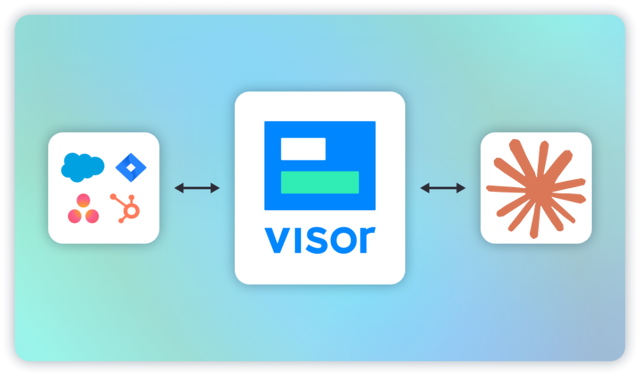
What actually popped InVision’s billion-dollar bubble (Hint: it wasn’t Figma)
- InVision launched in 2011 with a collaboration solution for presenting interactive designs to stakeholders.
- In 2018, with $100m ARR and millions of customers, InVision earned a $1.9 billion valuation from top-tier VC firms.
- Around 2019, InVision pivoted to offer products for all stages of the design process.
- The new products weren’t successful, and this shift in resources caused InVision’s collaboration solution to become uncompetitive.
- Figma’s dominance as a design creation solution didn’t need to spell the end of InVision’s role as a design collaboration solution.
- This reminds us of the importance of knowing what your customers hired your product to do and not abandoning that job while exploring new revenue opportunities.
At the height of InVision’s meteoric rise in 2017, nobody would have guessed that just seven years later it would be considered “the Myspace of design tools.” Ouch.
Brilliant people with the right backers, a strong foundation, and a compelling market opportunity failed. Even the most talented company builders should heed InVision’s implosion. So why did their bubble burst, and what can we learn from it?
It is easy to say that competition, like Figma, took InVision’s lunch money. Quite a few people have. But as someone with a closer relationship to InVision, I think that’s far too facile of an answer. Even before InVision’s new CEO emailed everyone to “close this chapter with heartfelt gratitude,” I had been thinking about what happened to this bygone behemoth.
For my company, Visor, InVision felt like a (flashy) neighbor in our ecosystem. Our companies hit the mainstream around the same time, and we both had plans to improve workplace collaboration. Some of InVision’s team members were customers of RocketVisor in 2018, and we used InVision’s products, too.
Personally, I have many friends who did tours of duty with InVision, from the C-suite to the sales team. As an NYC entrepreneur, I rubbed shoulders with Clark Valberg, InVision’s founder and CEO until 2022, at numerous dinners and parties over the years. I felt somewhat like an InVision insider, a Nick Carraway to their Jay Gatsby.
In this postmortem, I’ll take you deeper inside what actually went wrong at InVision and what we all can learn from its failure.
What InVision had going for them
First, what did InVision get right?
The company launched in 2011 with a very compelling solution for design collaboration. It was tailored to a specific persona (designers) and addressed a specific problem (sharing designs created in products like Sketch). I’ve previously written about how narrowness of focus is crucial when finding product-market fit.
While there were a lot of tools available for designers to do their work, there was no solution for the process of sharing designs with stakeholders. That part of the process was arguably the most important part: presentation and delivery. If your client or boss doesn’t understand your designs, what good are they?
InVision’s solution solved this with collaboration features that got designers excited. It turned static images into immersive prototypes anyone could click through and understand. They also included features for giving and discussing feedback.
I’ll let Senior UX & UI Designer Sarah Gleeson describe InVision’s early magic:
“In those early days presenting web designs to clients was, for me, creating a nicely formatted document with JPGs inserted and little notes on the side…
The problem? Nobody understood the designs. Suddenly you had clients printing out a website and commenting that the text was too small or that the colours weren’t vibrant enough….
So most of our time was spent explaining that it would look better after it was developed…
Suddenly, [with InVision,] clients saw a design, clicked through sections and understood not only how it looked but how it would work as a website.“
By taking this overlooked part of the design collaboration workflow and building a tailored solution, InVision nailed it. By 2016, it celebrated 2 million users. In 2017, it reported that it served 80% of the Fortune 100. By December 2018, it had raised over $350 million from top-tier firms FirstMark, Spark, Battery and Tiger Global.
By all measures, InVision had made it into an elite club. Entering 2019, it was valued at $1.9 billion, boasted 5 million users, and had cracked $100 million in annual recurring revenue. More than just a unicorn, InVision became what my friend and investor Mary D’Onofrio calls a “centaur” (cent = 100, $100 million ARR). This wasn’t just another story of a vaporware company that raised money at an excessive valuation without serious revenue. InVision had the revenue and growth to back up the hype.
“InVision has all the right tail winds with the right team, a great product and excellent customers,” according to Megan Quinn, an InVision board member.
That perfect combination made the subsequent fall so unexpected.
Replacing substance with style
Technically, the balloon didn’t pop with a bang. It began leaking air and never stopped. Between 2017 and 2020, InVision saw a gradual decline in customer usage. Eventually, people turned away from InVision in growing numbers.
Many different authors have attempted their explanation at what caused InVision’s downfall. Here are a few explanations:
- Too much hype, not enough substance: At its height, InVision’s marketing team created tons of marketing collateral in the form of podcasts, books, blog posts, and documentaries about the design space. Some have quipped that the marketing team produced more than the product team.
- Lack of innovation: According to one Glassdoor review, InVision let early successes get to their heads: “When I joined, we were by far the leading software solution in the space, but our cockiness and lack of innovation has built a trojan horse for other companies like Figma to literally eat our business from the inside out.”
- Failure to address customer needs: The community’s favorite gripe was InVision’s lack of folders. It took InVision 5 years to add this functionality, but by the time they did, it was 5 years too late. The community believed InVision was focused on shiny, new things, not making their existing solutions better for customers.
- Disjointed customer experience: Along the way, InVision acquired a lot of other tools. According to some, “All the acquisitions barely worked.” These acquisitions were not thoughtfully incorporated into InVision’s offering, resulting in a hodgepodge of capabilities that users didn’t value.
These answers aren’t very satisfying, because they seem like symptoms rather than the real issue. They also weren’t necessarily fatal. Many companies build excessive hype and live to tell the tale. Failed acquisitions are surprisingly common. Underneath all these issues, there’s one major problem:
InVision’s main blunder is that they forgot what their customers hired them to do, and they started trying to do other things instead.
Remarkably, they did initially seem to understand their customers’ needs, but somewhere along the way they decided on an expansion that was actually just a different direction.
Then-CEO Clark Valberg laid out the strategy in a 2019 TechCrunch interview. He saw “InVision becoming the Salesforce of the design world, with a broad array of partnerships and integrations across the industry to handle each, nuanced fraction of the process in a single, fluid place.”
This massive vision came at the cost of keeping their core solution competitive. As one Reddit user reflected:
“The core product, clickable prototypes in the browser, was always totally barebones and stayed exactly the same for the whole time I used it (maybe 5 years). There was never a time where prototyping in InVision wasn’t clunky, slow, and limited in terms of what it could make, but we put up with it because it was the best way to share prototypes with team members and for user testing with a low barrier to entry.“
Informal conversations with numerous other designers I know yielded similar sentiments. One described InVision’s technology as “black & white TV in a world that moved to color TV.”
While customers were begging them to add basic features like folders into their core offering, InVision shifted focus away from the core product to… seemingly nothing in particular. Instead, InVision launched a scattershot approach to scaling revenue. They rolled out Boards, Freehand, and Design System Manager. They acquired Silver Flows, Muzli, TrackDuck, and Wake (just to name a few). Most disappointingly, they promised a Figma-like design tool called Studio (originally expected to launch In January 2018), but it came years late and never gained market share.
This was the beginning of the balloon deflating. In 2019, TechCrunch observed skeptically that InVision “went from creating its own market with a paid prototyping and collaboration tool to competing with giants and startups alike as it introduced new products.”
Knowing what you got hired to do
After reading about this loss of focus, I know I’m not the only person thinking “Come on, InVision… You had one job!”
Anthony Ulwick, Founder and CEO of Strategyn would agree. Ulwick developed the Jobs To Be Done (JTBD) framework, which is a process for understanding what customers are looking to achieve when using your product. Clayton Christensen, the famous Harvard Business School professor, later popularized this theory. He explained the concept succinctly in this video.
In InVision’s own words, Utilizing the JTBD framework means:
“…the difference between solving a problem and building a product that we think solves the problem because it looks and feels so brilliant on the surface. The former means innovating solutions (which are more likely to have value and result in a sustainable business) and the latter means innovating ideas (which don’t necessarily have any value).”
Here are some examples of reframing popular products using JTBD:
- “People don’t just want light bulbs, they want to be able to see.”
- People don’t just want milkshakes, they want something to make their boring commute interesting (from the video above).
- People don’t just want smartphones; they want connection with friends, family, and the world.
- People don’t just want luxury watches, they want to make a fashion statement.
When you have a lens like this, it helps you understand how to make your product better at doing that specific job (vs. making general “improvements” that don’t actually help them).
For example, if we know that people buy luxury watches to make fashion statements, this simplifies the process of deciding how to make a superior luxury watch. Counterintuitively, it’s not about how accurately it keeps time. In fact, most 5-figure mechanical timepieces are hilariously imprecise compared to $20 Timex ones. The differentiating factor becomes: how can a luxury watch more effectively make a fashion statement?
With InVision, customers weren’t buying design delivery software. They were buying informed, satisfied stakeholders. But when Valberg and the team set a course for becoming the everything app for designers, the vision notably lacked specificity around what customers really wanted InVision to do for them.
One designer on Hacker News recalls talking to InVision salespeople who weren’t even sure about the value of what they were trying to sell:
“What was even more wild was watching them clearly dump money into gimmicks and sales over their product. I worked at a large agency during invisions heyday and they were constantly pitching all levels of employees on whatever their new thing was, […] I prob sat through a dozen pitches in a year where literally nothing about their product fundamentally improved or changed. People who had no idea what a design system was would pitch a half baked “design system manager” or similar, but were unable to really talk to any depth about design systems or answer questions about gaps in their product.”
What would lead InVision to lose sight of their JTBD? Here are two likely reasons:
They thought they were running out of total addressable market (TAM) and needed to find more. After receiving over $350 million from investors and achieving $100 million ARR as a design collaboration tool, they might have seen slowing growth and needed to open new revenue streams in other areas of the design process to keep growing and justify price increases for licenses. This is a natural problem for large businesses, and it’s one that possibly also drove Carta to make a trust-busting blunder that might well be the beginning of their end. But the key to late-stage growth is finding a way to expand your revenue streams without abandoning your core job or overestimating your ability to execute on multiple new product lines.
They were afraid of Figma and made unforced errors by entering too many markets: It’s also likely they saw Figma building momentum within the design industry and were afraid they would do a better job at the collaboration piece. Instead of doubling down on their JTBD and carving out a unique part of the market, they flinched and tried to wage war on too many fronts.
Even though Figma came out of the gate with basic collaboration features, those features were never going to be able to seriously compete with a product built specifically for collaboration. Many creation tools will include some collaboration features. While that’s a good first step for most products, it’s exceedingly difficult for one product to be both a creation platform and a collaboration platform. While designers “hired” Figma to get designs ready quickly, there was still a job opening for turning those designs into informed, satisfied stakeholders.
Unfortunately, InVision walked off the job.
It didn’t have to end this way
Separate creation and collaboration tools coexist quite comfortably, successfully even.
In a design-adjacent space, Frame.io (acquired by Adobe) enabled motion designers to collect feedback on videos they created in products like Premiere Pro, Final Cut, and DaVinci Resolve. The streamlined experience for sharing clips, managing versions, and getting feedback drastically improved this workflow, and these solutions coexist profitably.
DocSend (acquired by Dropbox) is another example that I personally use to share important documents with my own stakeholders. There are numerous sales & marketing-focused analogs like Bynder, Seismic, and Highspot that solve the advanced challenges of document collaboration. These products let you manage access, report on engagement, and keep content updated live. Many of these shared documents are created in Google Docs or Slides, which also nominally offer these capabilities. Nevertheless, these dedicated collaboration solutions offer compellingly superior solutions for sophisticated sharing workflows. This differentiation allows them to complement (rather than compete) with the apps for document creation.
GitHub is perhaps the best example of a platform dedicated to collaboration, not creation. In 2022, Microsoft (that acquired the product in 2018) reported that GitHub had $1 billion in ARR. GitHub is not the product where engineers write code. They do that in products like Visual Studio Code, Sublime, and VIM. GitHub is an essential tool for engineers to manage and collaborate on the code they write. It provides a compelling example where the collaboration solution became arguably more valuable than the creation ones.
The differences between creation and collaboration products’ JTBD explains their rich symbiosis. They need each other. The ultimate goal of nearly all work is to be shared with others. What makes a great creation experience rarely makes a great collaboration experience. Combining all that into one solution is like trying to build an F1 car that can also climb boulders. You can’t, because the features that make it go fast make it bad at climbing boulders.
This is one of the principles that drives customers to buy Visor. Our customers hire Visor to keep stakeholders informed. Often they’ll create their plans in products like Jira, but they’ll struggle to disseminate those plans effectively. They resort to emailing spreadsheets or responding constantly to messages. Enlightened project managers leverage Visor as a dedicated collaboration solution, because our product offers advanced capabilities designed to keep stakeholders informed. Just like Frame.io, Docsend, and GitHub, Visor solves a frustrating but valuable collaboration workflow dramatically better than any alternative.
We’re confident in the value we can bring by dedicating ourselves to solving the collaboration workflow. But reading between the lines, InVision lost confidence in this. They launched numerous creation-oriented products, like Freehand and Studio. Carrying the analogy forward, InVision was in the business of making F1 cars, saw Figma making off-road SUVs, and tried to make their F1 cars climb boulders, too. That didn’t end well for them.
Conclusion
So what can we learn from InVision?
It’s simple: know what customers hire your product to do and keep showing up to work for them.
Had InVision continued investing in their JTBD as a collaboration platform, plenty of similar examples suggest they could have established a deep, profitable symbiosis with creation tools like Figma.
But they didn’t retain this commitment to their core job, and they stopped showing up for their customers. The same thing happened to InVision that would happen to anyone who stopped showing up to work: they got fired.
Thanks to Alexis Kim for reading drafts of this.






